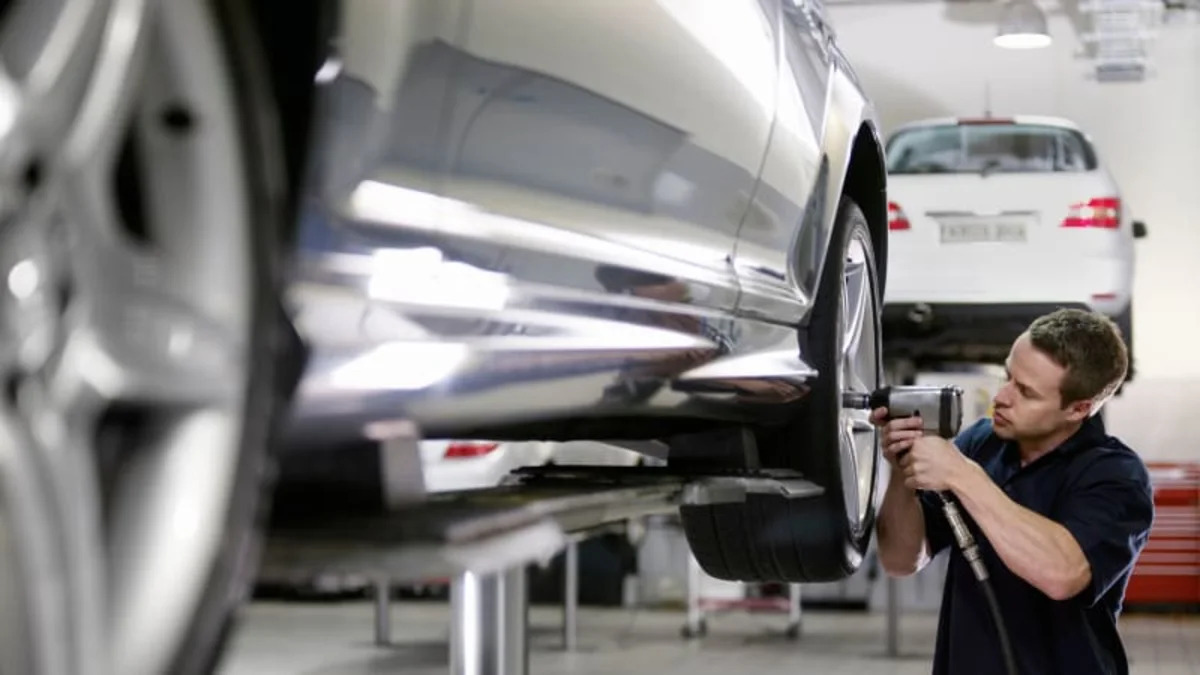Everyone who owns or has owned a car knows the price of driving doesn't stop when you leave the dealership. Maintenance and repairs contribute about four percent to the overall cost of a vehicle over five years, according to a survey by Consumer Reports. And while four percent may not sound like a lot, it can mean thousands of dollars depending on the cost of your vehicle overall. So, what's a driver to do to keep more of his or her money?
Consider doing maintenance yourself
This used to be the obvious answer decades ago, but cars now come equipped with all sorts of electronic and computer gadgetry and fancy parts. It may not be feasible, particularly for those who don't know much more about cars than where the key and the gas go. It still has some merit, however, if you're at least a little car-savvy. You can probably rotate your own tires and replace air filters, fuses, lights and wiper blades yourself rather than pay someone else to do it. Remember to always follow your instruction manual's instructions and guidelines, regardless of whether or not you decide to do maintenance yourself.
Review your owner's manual to gain a good understanding of what your car needs in the way of maintenance even if you're not mechanically inclined. With background knowledge you're less likely to agree to extra work that your car doesn't really need when taking it into the shop.
Choose your auto repair shop wisely
Should you take your car back to the dealership or a local repair shop when it needs maintenance? The mechanic will become familiar with your car and its unique quirks if you always take it to the same local shop. This can be a good thing, particularly if you do some research in advance and find one that regularly offers specials and discounts.
You can also time maintenance to coincide with price breaks. Dealerships make a lot of money from repairs and maintenance, so they're inclined to try to sell you extra services you won't actually need for another 5,000 miles or so.
Drive smart and keep on top of things
It's better — and usually cheaper — to budget ahead than to be surprised by an expensive major repair because you put off preventative maintenance. Have the oil changed when your manual suggests, and take care of other odds and ends when you reach the requisite number of miles.
Driving smart can go a long way toward saving on maintenance costs as well. For example, Time says that if you avoid slamming on the brakes you can give them up to an additional 20,000 miles of life. Be kind to your car and it will be kind(er) to your wallet.
Consider prepaid maintenance
Warranties on new cars don't typically cover maintenance costs unless you happen to buy a BMW. According to Consumer Reports, BMW offers free maintenance under the terms of its four-year warranty for new cars. But most warranties, even extended warranties, just cover unexpected repairs.
A prepaid maintenance plan or PMP is different. You can add it to the price of your car — and the dealership will probably suggest it — to pay for the specific preventative maintenance your vehicle will require, like oil changes and tire rotation. In other words, you'll pay up front at the time of purchase rather than later. This can make sense if the likely maintenance costs for your new vehicle will tally up to more than the cost of the plan, but otherwise, you're probably throwing your money away. You're also limiting yourself to having the work done at the dealership, which can be costly unless the dealership offers discounts as part of the plan.
Sources
- Consumer Reports: What That Car Really Costs to Own
- Precision Tune Auto Care: How to Reduce Car Maintenance Costs
- Time Money: 23 Ways to Slash Your Car Expenses
- Bankrate: Does Prepaid Car Maintenance Save Money?


Sign in to post
Please sign in to leave a comment.
Continue